A few of you may know that I’ve been away for the last few weeks visiting family in Kenya, where my mum is based on the coast. I don’t usually eat or cook with much fish, both for cost and sustainability reasons, so I tend to treat this time on the Indian Ocean as my opportunity to cram in a year’s worth of seafood. I’ve been very conscious that while this is utterly exciting and delicious for me, for most people enveloped in Western winter right now, red snapper and mango crudo is not at the top of their cooking agenda. For this reason, I’ve been a little quiet on the recipe front.
I have wanted, however, to share a brilliant book that I’ve just finished reading. Asako Yuzuki’s BUTTER (now sun cream-smeared and dog-eared) accompanied me everywhere for almost the entire holiday, so much so that even my brother (who historically reads about a book every two years) teased me about when I’d finally finish. The reason for my tortoise pace, I tried to explain to him, was because each page was so delectably rich and moreish that I found myself reading it again and again. I even broke my lifelong self-imposed code of not turning down page corners to mark my favourite bits, that’s how good it was.
Rika Machida, a driven young journalist in Tokyo, scores her first prospective article by securing an exclusive interview with alleged serial killer and infamous glutton, Manako Kajii. Immediately convinced of the convict’s innocence, and that the string of men that Kajii has seduced and ‘killed’ have died of either natural or self-inflicted causes, Rika sets about trying to win the trust (and true story) of her notoriously tight-lipped interviewee. But instead of feeding her information, Kajii feeds Rika instructions: she must cook herself rich butter mentaiko spaghetti; she must dine at Kajii’s favourite French establishment; she must try a belly-warming midnight butter ramen on her own after an evening with her lover. But as Rika assiduously sets about her research and starts, visit by detention centre visit, to win Kajii’s affections through reliving her gastronomic past, far bigger revelations are made about the journalist’s own life, and the people she surrounds herself with.
It’s a tale of self-exploration, forgiveness and self-love, unlocked through the rediscovery of food (particularly butter), and taps into fascinating themes of misogyny, fat phobia and control in contemporary Japan. It’s one of those novels where you feel the characters go on living every time you close the book, and is so deliciously thorough in its detail that it almost reads like a string of recipes. Never has the sensation of cold butter melting on a tongue been more tantalisingly described, nor the thawing effect of a bowl of hot ramen, the yellow outlines of its butter topping ‘blurring messily’ in the clear broth. Never has a novel made me want to run to the kitchen and cook.
I’m sharing a little excerpt that I earmarked, in the hope that you might feel a similar urge to run and get your hands on a copy of this brilliant book:
When the rice cooker began to emit a sweet smell, Rika felt a sense of industriousness rising up in her. For the first time in what seemed to her an age she dusted the flat. It was as she was vacuuming that the rice cooker beeped. Lifting the lid, Rika saw the rice glistening beyond the plume of steam. Quite unexpectedly, she found herself entranced by the sight of its translucent gleam. She didn't own any rice bowls, so she used the plastic paddle that came with the cooker to spoon the rice messily into a café au lait bowl. Next she retrieved the butter, which she’d kept in the fridge as Kajii had stipulated, peeled off the wrapping paper, and gazed at its smooth buttercup-hued surface. What lay ahead was unknown territory. She had sampled the buttered rice that was sometimes served with burger patties, but she'd never encountered rice with soy sauce and butter - let alone piping-hot rice with top-class butter.
She perched a sliver of butter on top of the rice. From one of the sachets of soy sauce that came with convenience store bento boxes and which tended to accumulate in her apartment, she squeezed a single drop into the bowl.
Just as instructed, she moved the butter and some rice to her mouth before the butter had a chance to melt.
The first thing Rika felt was a strange breeze emanating from the back of her throat. The cold butter first met the roof of her mouth with a chilly sensation, contrasting with the steaming rice in both texture and temperature. The cool butter clashed against her teeth, and she felt its soft texture right down into their roots. Soon enough, just as Kajii had said, the melted butter began to surge through the individual grains of rice. It was a taste that could only be described as golden. A shining golden wave, with an astounding depth of flavour and a faint yet full and rounded aroma, wrapped itself around the rice and washed Rika’s’ body far away.
And now, some of the aforementioned, unseasonal recipes I’ve enjoyed creating over the past few weeks (as well as a more hearty, belly-warming soup):
P.S. if anyone has any contacts in the publishing/literary world, could they please put in a request with Asako Yuzuki’s agent for her to write a cookbook xx
Red Snapper, Mango and Chilli Crudo
serves 4 (as a starter)
1 large fillet (about 250g) of Snapper (or a firm white fish of choice)
2 mangoes
1 lime, juiced
A glug of EVOO
1 red chilli, finely sliced
A sprinkling of Tajín
Salt, to taste
Ensure the snapper fillet is very fresh and skinless. Use a sharp knife to thinly slice the fish into bite-sized slivers. Arrange the slices evenly across a chilled serving platter or individual plates.
Peel the mangoes, then slice the flesh into thin, delicate strips. Scatter the mango evenly over the fish.
In a small bowl, mix the juice of one lime, a generous glug of extra virgin olive oil, and a pinch of salt. Drizzle over the fish and mango.
Sprinkle red chillies and Tajín over the top, adjusting according to your spice preference. Add an extra pinch of salt if needed.
Serve the crudo fresh, accompanied by crisp tortilla chips or another crunchy carby vehicle of choice.
Crab and Avocado Chapati Tostadas
makes 16 chapatis
for the chapatis
300g all-purpose flour, plus extra for dusting
¾ tsp salt
400ml neutral oil
150ml water
for the crab, chive and lime mayo
300g fresh crab meat (pre-shelled from supermarket great too!)
1 egg yolk
¾ tbsp white wine vinegar
¼ tsp salt
90ml neutral oil
A small handful of chives, finely chopped
1 lime (zest and juice)
1 green chilli, finely chopped
to finish
3 avocados, finely sliced
1 lime (juice, for finishing)
Roast chilli oil (see tofu soup recipe below)
In a large bowl, combine the flour and salt. Add 100ml of the neutral oil and mix until the mixture resembles coarse crumbs.
Gradually add the water, mixing until a soft dough forms. Knead for about 5 minutes until smooth. Cover with a damp cloth and let the dough rest for 30 minutes.
Divide the dough into 16 equal pieces. Roll each piece into a small circle, about 10cm in diameter, dusting with flour as needed.
Heat a splash of neutral oil in a frying pan over medium heat. Cook each chapati for about 1–2 minutes on each side until lightly golden and puffed. Transfer to a plate and repeat with the remaining chapatis.
Heat the remaining 300ml of neutral oil in a saucepan to 180°C (350°F). Deep-fry the pre-cooked chapatis for 1–2 minutes each, until golden brown and crispy. Drain on paper towels and set aside.
In a small bowl, whisk the egg yolk, white wine vinegar, and salt until combined. Very gradually, drizzle in the 90ml of neutral oil while whisking continuously to form a smooth mayo.
Stir in the lime zest, juice, chopped chives, green chilli, and fresh crab meat. Mix well and season to taste.
Arrange a few slices of avocado neatly on each fried chapati. Top with a generous spoonful of the crab mayo mixture, drizzle with roast chilli oil and finish with a squeeze of lime juice.
Crispy Tofu and Chilli Noodle Soup
serves 4
for the soup
1 white onion, finely diced
2 thumbs ginger, peeled and finely diced
2 thumbs fresh turmeric, peeled and finely diced
1–2 habanero chillies, finely diced
4 spring onions, finely sliced (reserve some green parts for garnish)
4 garlic cloves, minced
3 tomatoes, diced
600ml veg stock
1 can coconut milk
2 tbsp soy sauce
1 tbsp fish sauce
2 heads pak choi, leaves separated
270g dried noodles (I used udon)
Juice of 1 lime
for the crispy tofu
340g firm tofu
2 eggs, lightly beaten
4 tbsp cornflour
100g panko breadcrumbs
1/2 tsp salt
neutral oil, for frying
for the chilli oil
50g ginger, peeled and finely diced
7 cloves garlic, peeled
1-2 habanero chillies, finely diced
2 cups neutral oil
1 cup gochugaru flakes
3 tbsp soy sauce
salt, to taste
to finish
toasted sesame seeds
a small handful of coriander, leaves picked
4 tbsp chilli oil (see above)
Start by making the chilli oil. This will yield far more than you need for the soup, but trust me, you want it. In a small saucepan, combine the first five ingredients. Set on lowest heat and bring to a gentle simmer. Cook for 10-15 minutes, until the garlic cloves are soft. Make sure not to let it get too hot. Remove from the heat and add the soy sauce. Taste for seasoning. Remove the garlic cloves, finely dice and return to the pan. Once totally cool, transfer to a sterilised jar.
For the soup, heat a drizzle of oil in a large pot over medium heat. Add the onion, ginger, turmeric, habanero chillies, and the white parts of the spring onions. Sauté until fragrant and softened, about 5–7 minutes. Stir in the garlic and cook for a further minute.
Add the diced tomatoes and cook until softened, about 5 minutes. Pour in the vegetable stock, coconut milk, soy sauce, and fish sauce. Stir to combine. Bring to a gentle simmer and cook for 15 minutes to allow the flavours to meld.
Meanwhile, cut the tofu into bite-sized cubes and pat dry with paper towels. Set up a breading station: place cornflour in one bowl, beaten eggs in another, and panko breadcrumbs mixed with salt in a third. Coat each tofu cube in cornflour, dip into the egg, and then coat with panko breadcrumbs.
Heat enough neutral oil in a frying pan to cover the bottom. Fry the tofu cubes in batches until golden and crispy on all sides. Drain on paper towels.
A few minutes before you’re ready to serve, add the udon noodles to the soup and cook until al dente (a couple of minutes shorter than package instructions). Add the pak choi leaves and allow to wilt.
To finish, squeeze lime juice into the soup and adjust seasoning to taste with more soy sauce or fish sauce if needed. Divide the cooked udon noodles among serving bowls and ladle the hot soup over them. Top each bowl with crispy tofu cubes, a drizzle of chilli oil, the toasted season seeds, spring onion and coriander.
Thank you so much for reading! If you liked the recipe (or the ramblings) I’d love to hear your feedback 💛and please do share the love using the link below.

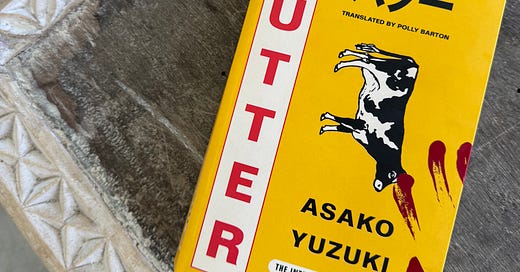



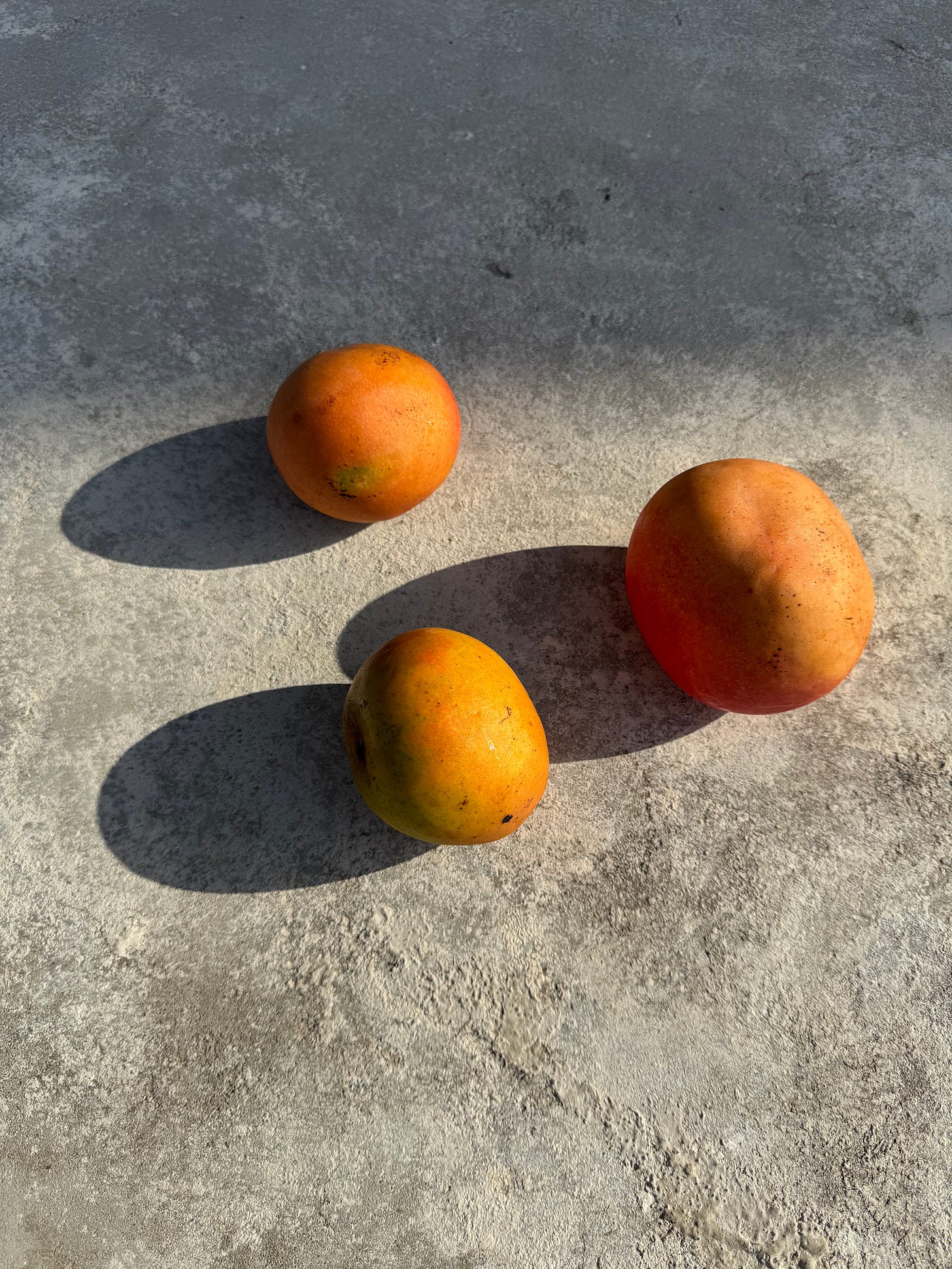
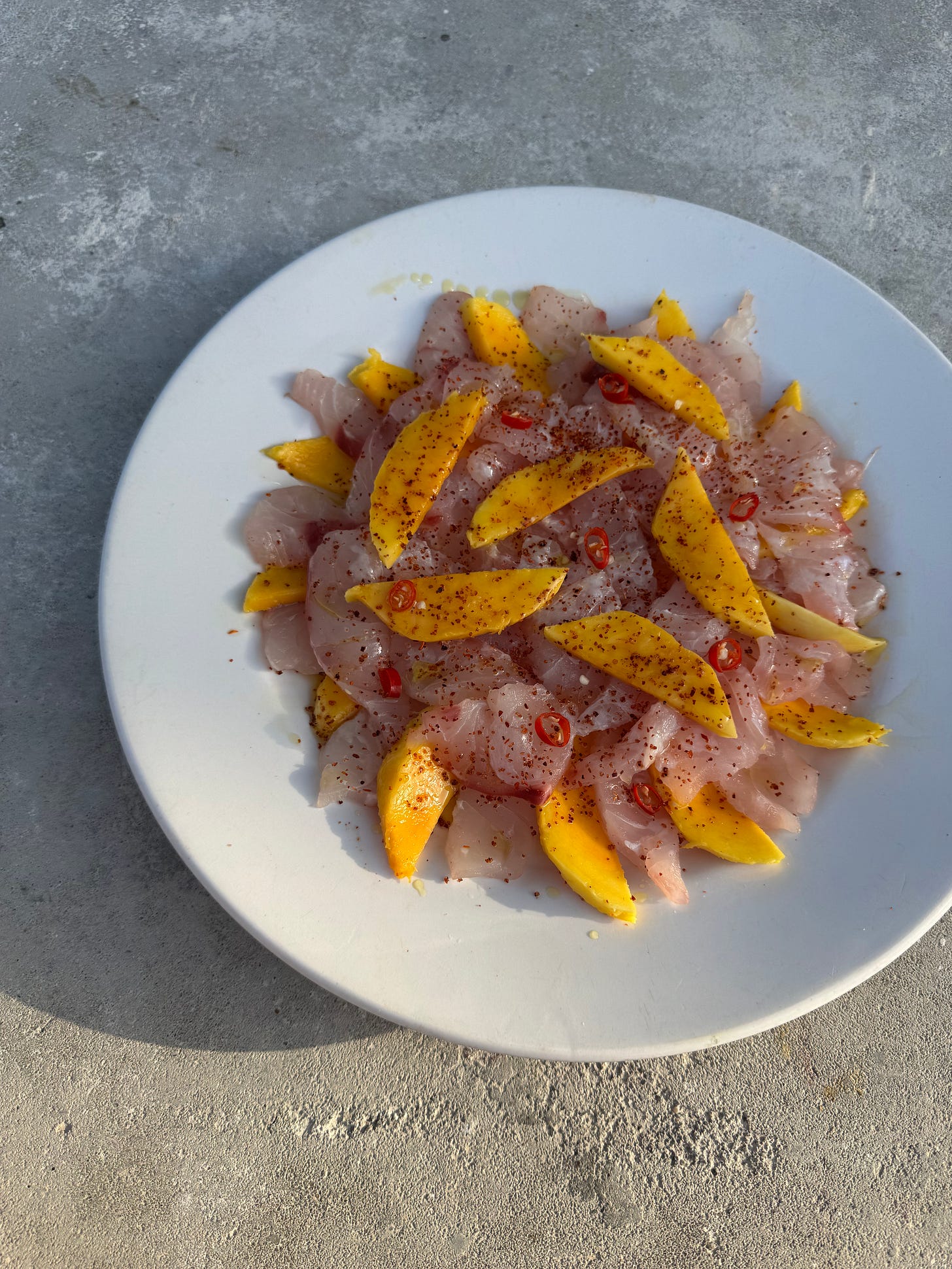
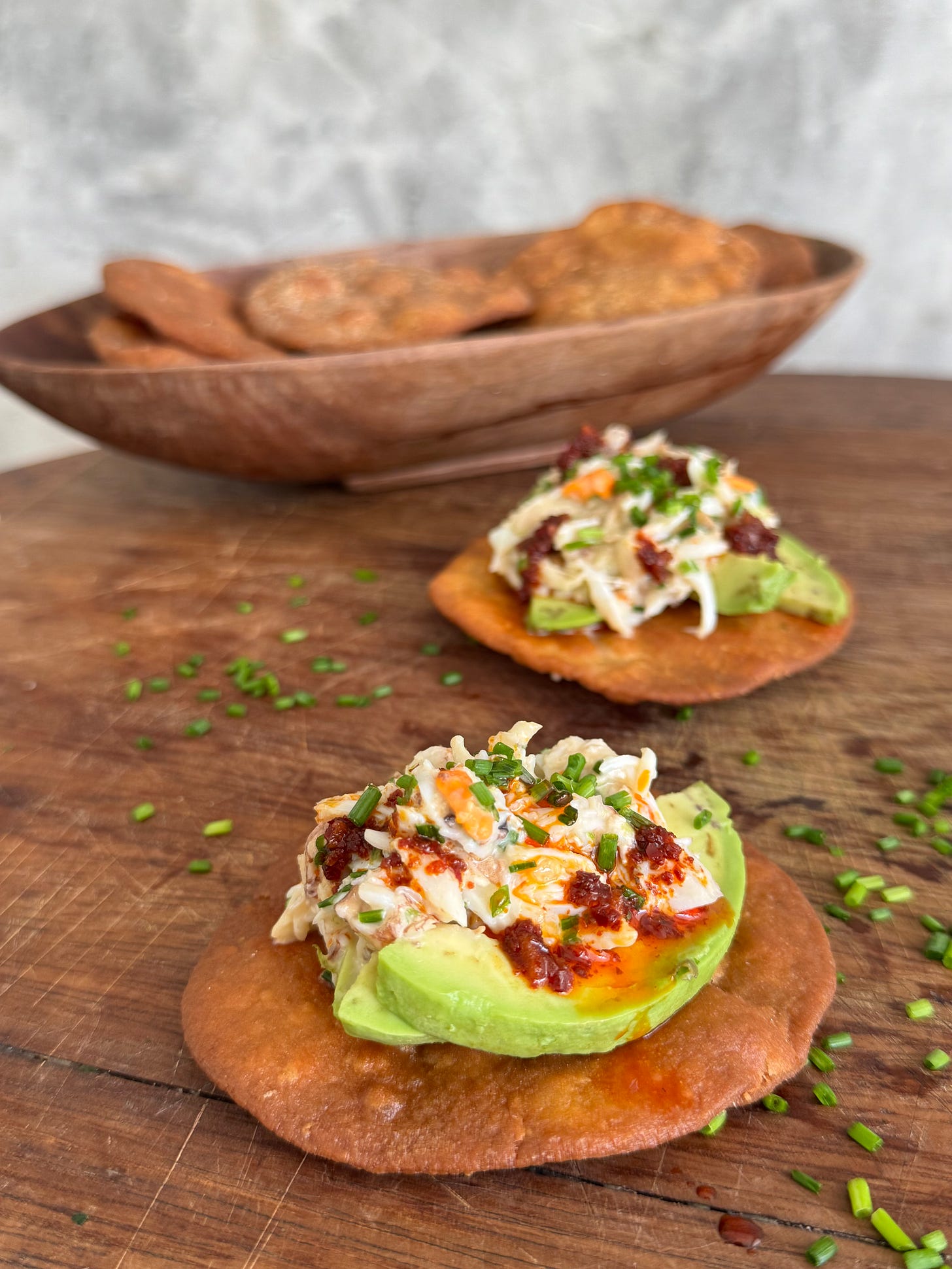
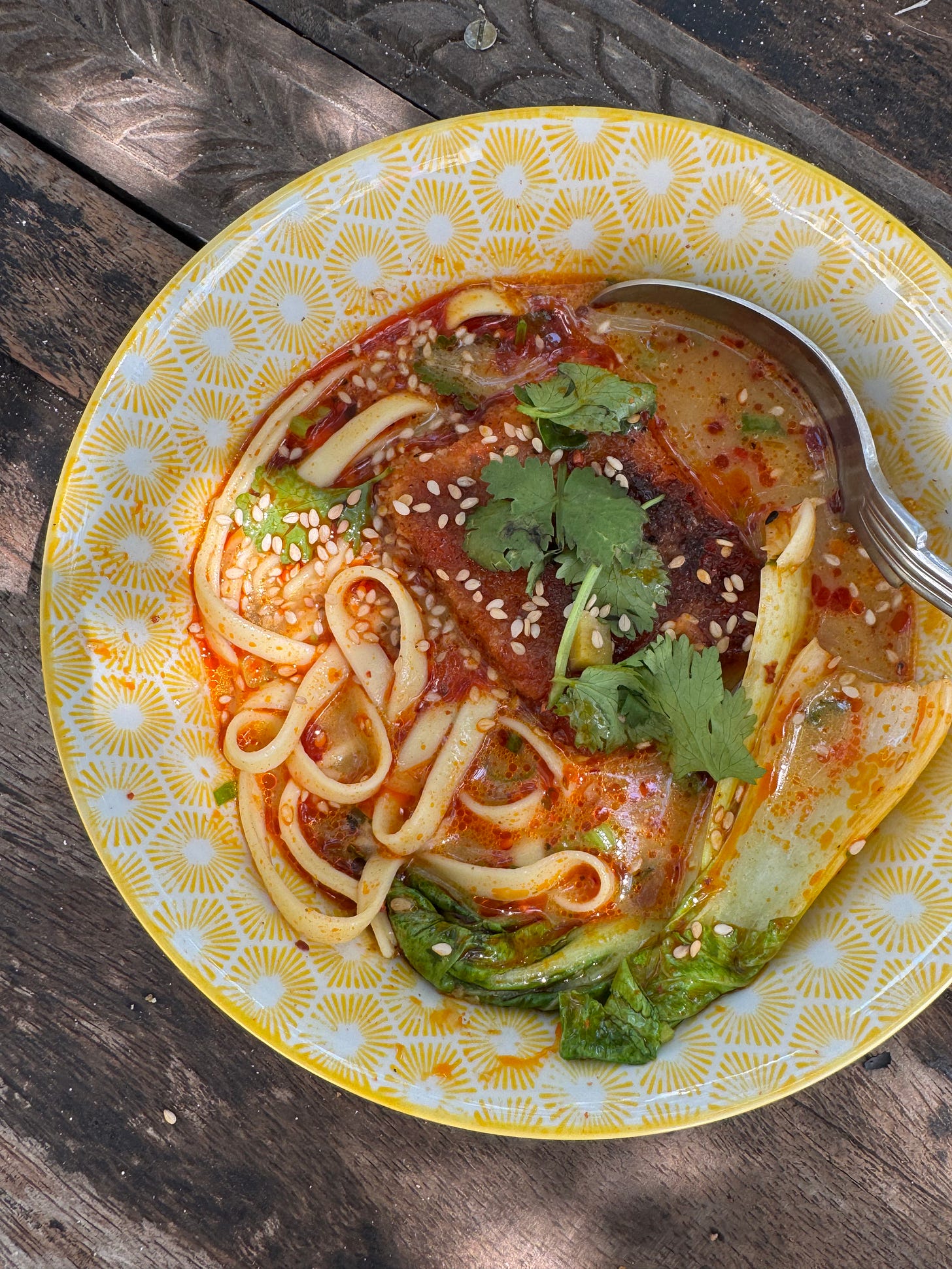
I love your tropical 🐠 exotic menus ! These will be super yummy for our guests at our camp the Boababs of Kitangani .